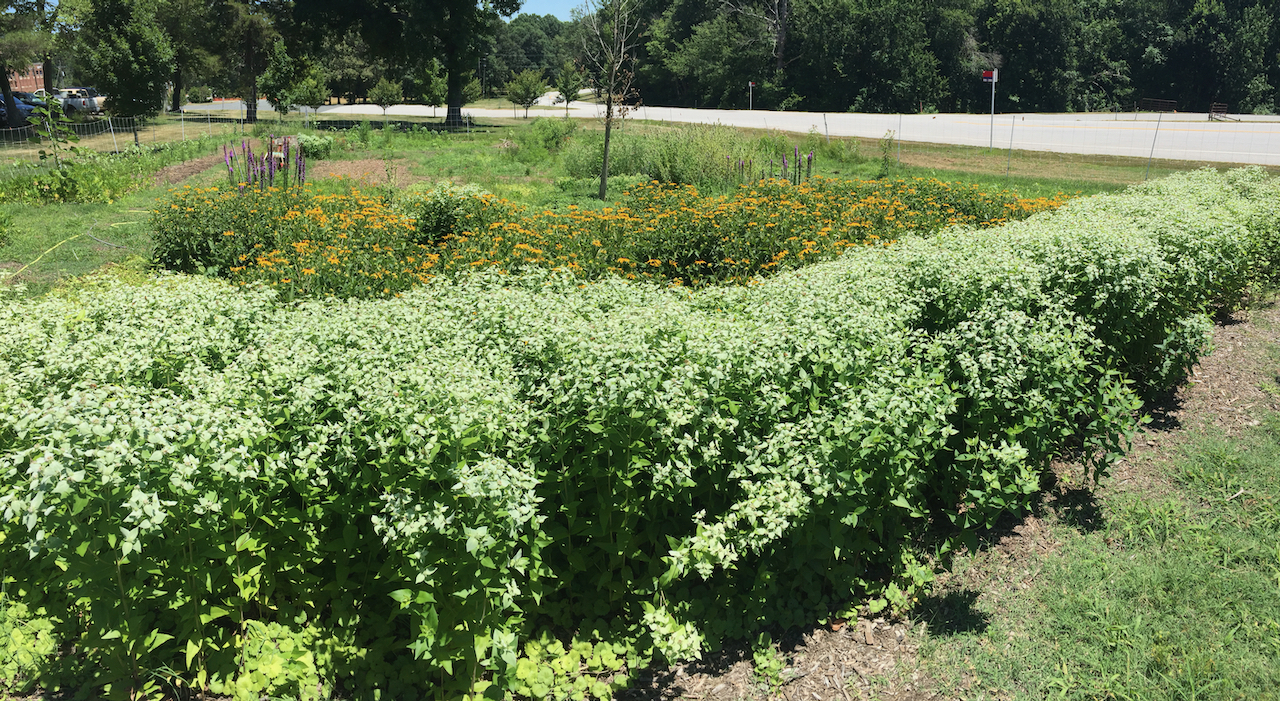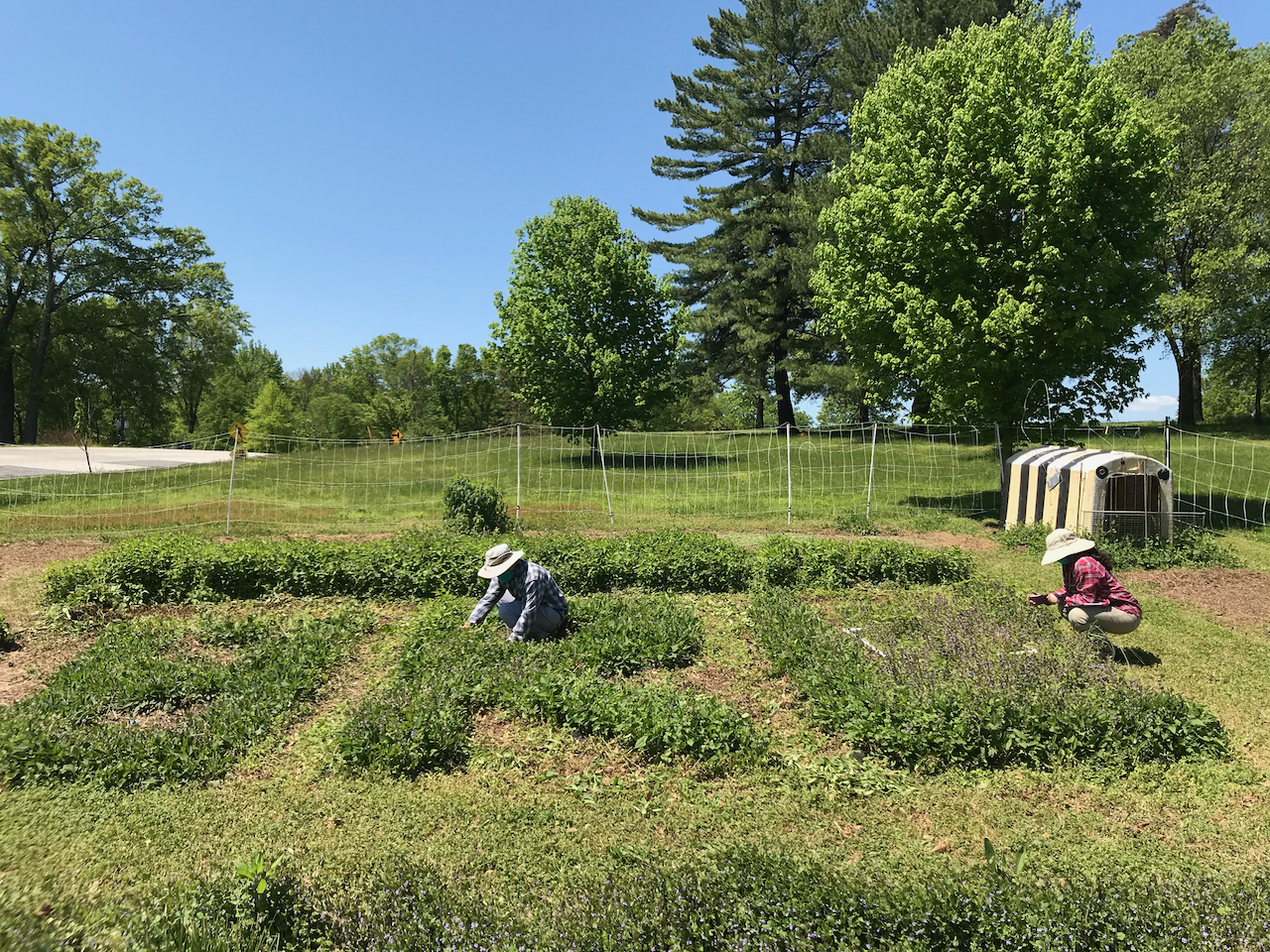Punch in the gut: Parasite tolerance of phytochemicals reflects host diet. How plant chemistry could shape insect infection, provide treatments for infected bees, and mitigate transmission of a neglected tropical disease.
May 12, 2022This post references our new article in Environmental Microbiology: Palmer-Young EC, Schwarz RS, Chen Y, Evans JD. 2022.Punch in the gut: Parasite tolerance of phytochemicals reflects host diet. Environmental Microbiology. doi:10.1111/1462-2920.15981 (https://sfamjournals.onlinelibrary.wiley.com/share/QRYWCHV24RKJHYBZMHUN?target=10.1111/1462-2920.15981)
You can find the preprint on Biorxiv (https://doi.org/10.1101/2021.10.07.463547) and a video summary of our findings on Youtube (https://www.youtube.com/watch?v=u_HY0VakaDo).

What do garlic-chomping plague-era gravediggers, milkweed-defoliating monarch butterflies, and pollen- and propolis-packing honey bees have in common? They’re all swallowing cocktails of antimicrobial substances from plants, coopting the chemistry of their photosynthetic partners to make life tough on their aspiring gut colonists. But while we’re admiring the cleverness of our fellow animals and the biosynthetic panache of their chosen plants, how about asking some gut parasites how all this mistreatment has influenced their lives and family history? In our last post (https://www.insidethehive.tv/blog/hot-and-sour-parasite-adaptations-to-honey-bee-body-temperature-and-ph-and-what-it-could-mean-for-beekeeping-and-neglected-tropical-diseases), we explored how the well-heated bee colony could select for trypanosomatid parasites that keep their cool at high temperatures. In this article, we further probe the physiology of these parasites, uncovering features that provide insights into the challenges of infecting bees as well as another host—the mosquito; possible plant-based treatments for parasite-burdened colonies, and a weakness of related human parasites that could aid control of a major neglected tropical disease.
In the study, we compared the tolerance of trypanosomatids from bees and mosquitoes to 26 substances—25 phytochemicals and one antifungal drug—that are known to inhibit growth of the related Leishmania species that cause disease in humans. We focused on flavonoid compounds, which are abundant in nectar, pollen, and (especially) propolis. Although we were optimistic that these compounds would provide a sure cure for bees, this optimism was tempered by the more realistic expectation that bee parasites would probably be as well-adapted to flavonoids as are their pollen-collecting hosts.
We identified 11 compound and extracts with bee parasite-inhibiting activity (Figure 1). These included thymol, clove oil, and clove’s main chemical component eugenol, all of which appear to have broad-spectrum activity against a variety of microbes (trypanosomatids included)—as well as against Varroa mites. Bees seem to be able to tolerate higher concentrations of each of these substances than are needed to slow growth of parasites, suggesting that supplementing colonies with fragrance-infused diets or flowers rich in the same compounds could strike a blow against parasites without bringing down bees in the process.

Figure 1. Estimates of 50% inhibitory concentrations (IC50, in µg mL-1) for the tested trypanosomatids from honey bees (Crithidia mellificae and Lotmaria passim) and mosquitoes (C. fasciculata). To aid comparisons across strains and compounds, cells are shaded from yellow to red in order of decreasing IC50 value (i.e., decreasing tolerance of strains and increasing inhibitory activity of compounds).
Comparisons between the parasites from honey bees (Crithidia mellificae and Lotmaria passim) with the one from mosquitoes (Crithidia fasciculata) hinted that the phytochemistry of insect diets has been a significant driver of their associations with parasites. Honey bee parasites were more tolerant of chrysin, a flavonoid found at high concentrations in nectar, pollen, and propolis. In contrast, mosquito parasites were more robust to vanillin and cinnamic acid—two compounds that result from wood decomposition, reaching high concentrations in the plant debris-filled ponds that serve as habitat for mosquito larvae and transmission sites for their parasites.
Finally, there seem to be some major differences between the insect-restricted parasites of bees and mosquitoes relative to their sand fly-vectored, mammal-infecting Leshmania relatives. Overall, the insect-restricted parasites have a strikingly high tolerance to the flavonoids that looked promising for treatment of Leishmania infection. Now, both bees and mosquitoes drink flavonoid-rich nectar (hey, even vampires get sugar cravings…). But so do the sand flies that transmit Leishmania. So why might the mosquito parasites be tolerant of these compounds, whereas the sand fly parasites are highly susceptible? The answer could lie in tradeoffs between phytochemical tolerance and infectivity in mammals. All the mammal-infecting trypanosomatids appear to have lost the gene for catalase, a protein that helps buffer cells against the effects of chemical stressors, including flavonoids. However, bursts of reactive oxygen species—which catalase would normally degrade—seem essential for Leishmania’s transition between insect- and mammal-associated life stages. In other words, this adaptation to a two-host life cycle could have made Leishmania more susceptible to flavonoids.
This susceptibility to flavonoids is not just important for treatment of human patients. Because nectar is rich in flavonoids and highly sought-after by sand flies, it also suggests that stocking landscapes with flavonoid-rich floral nectar sources could reduce Leishmania transmission by flies—while providing food for pollinators to boot. If so, our humble interrogation of bee parasites could point us towards treatments for colonies, better understanding of parasite ecology and evolution, and a new strategy for mitigation of a major neglected tropical disease.

Figure 2. The garden outside of the Bee Research Laboratory. Parasites of the nectar-feeding insects tested in the study appear well adapted to the flavonoids found in floral nectar. However, these same nectar compounds could help to curb Leishmania transmission by flies. Photo by Jay Evans.
By supporting us on Patreon, you are helping us to make more videos about bees for everyone. Check it out.
Stay connected with news and updates!
Join our mailing list to receive the latest news and updates from our team.
Don't worry, your information will not be shared.
We hate SPAM. We will never sell your information, for any reason.




